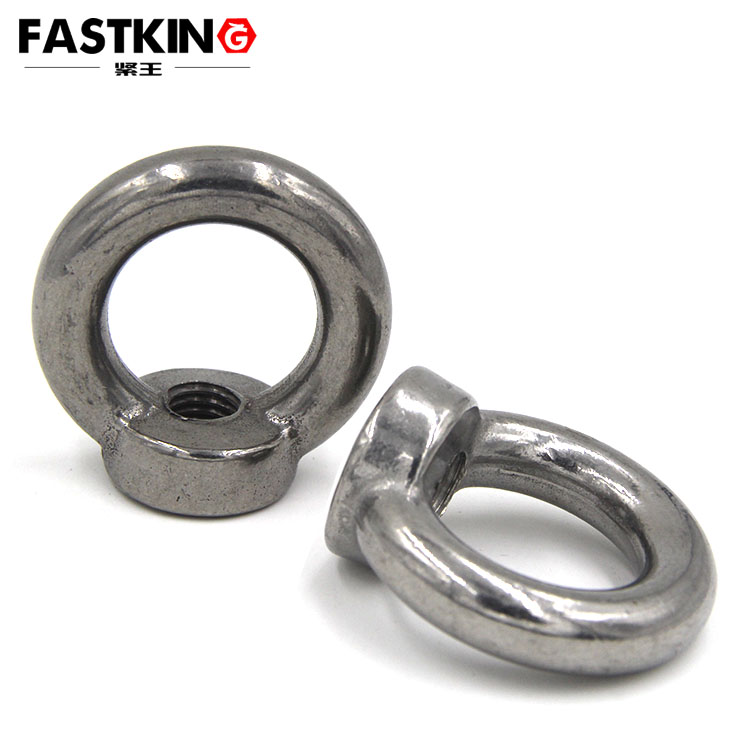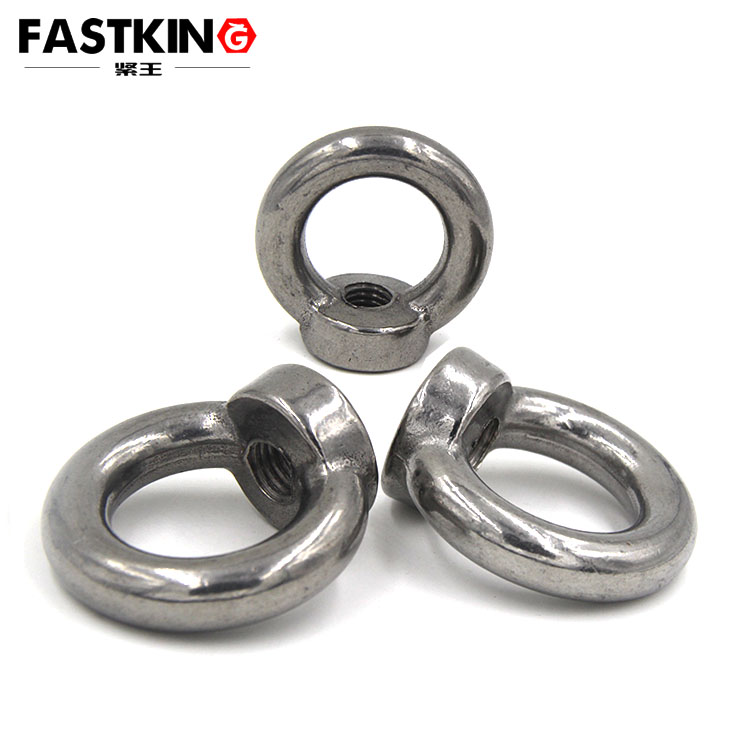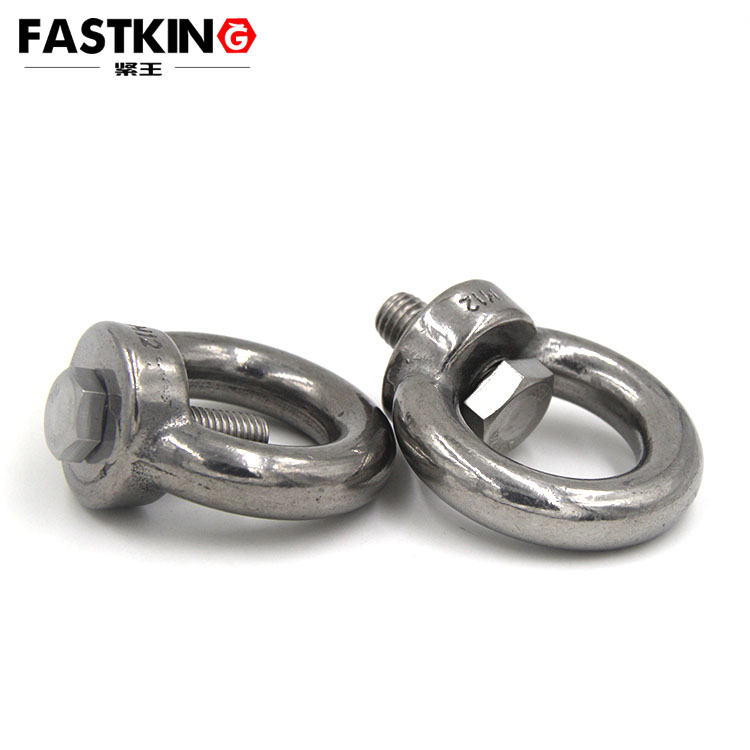Definition and Characteristics of Eye Nuts
Eye nuts are indispensable components in modern industrial lifting operations, as crucial as the steel cables and hooks of cranes. In scenarios such as heavy equipment installation, large component transportation, and precision instrument handling, eye nuts bear the dual responsibilities of connection and load-bearing. This seemingly simple fastener is, in fact, an engineering masterpiece that has undergone precise calculations and rigorous testing. Its design and manufacturing embody the essence of materials science, mechanical principles, and production techniques.

Usage Scenarios
Mechanical Manufacturing Field
Eye nuts are commonly used in mechanical manufacturing for lifting and securing large mechanical equipment, such as molds, chassis, and motors. They effectively prevent equipment from shaking or falling during lifting, ensuring the safety of the lifting process.
Construction Field
In construction, eye nuts are used to suspend lighting fixtures, air conditioners, ceiling fans, pipelines, and other equipment. For example, construction workers can use eye nuts to install large lighting equipment in the halls of hotels, theaters, and other venues.
Aerospace Field
Eye nuts are used in the aerospace industry for lifting and securing critical components such as aircraft engines and brackets. Due to their high strength and reliability, they meet the stringent safety and stability requirements of aerospace equipment.
Port and Shipbuilding Field
In ports and shipbuilding, eye nuts are used to lift large steel structures and ship components. Their high-strength design can withstand significant loads, ensuring the stability and safety of the lifting process.
Other Industrial Fields
Eye nuts are also widely used in industries such as railways, power, petrochemicals, mining, and automotive manufacturing for lifting and securing various mechanical equipment and components.

Usage Methods
Selecting the Appropriate Specification
Choose the appropriate eye nut specification based on the weight and size of the item to be lifted. The load-bearing capacity of eye nuts varies by specification. For example:
An M20 threaded eye nut has a working load of 2.15 tons.
An M48 threaded eye nut can handle a working load of up to 10 tons.
Ensure that the load-bearing capacity of the eye nut exceeds the weight of the item to be lifted.
Installation Method
Eye nuts must be installed vertically on a flat supporting surface to ensure a tight fit between the nut and the surface.
During installation, do not use tools to forcibly tighten the eye nut; instead, manually tighten it until it fits snugly against the supporting surface.
If additional stability is needed, appropriate washers can be added between the nut and the supporting surface.
Usage Precautions
Load Limit: Do not exceed the maximum load specified for the eye nut to prevent deformation or breakage.
Inspect the Eye Nut: Before use, carefully inspect the eye nut for any deformation or damage. If visible deformation is detected, the nut should be discarded immediately.
Lifting Angle: When lifting at a 45° angle, take measures such as countersinking to ensure the supporting surface of the nut fits tightly with the mating part, and ensure the two eye nuts are aligned in the same plane.
Special Materials: If using eye nuts made of special steel or those that have undergone heat treatment, note that their ductility may be reduced, making them more prone to breaking under overload.

Regular Inspection
Eye nuts should be regularly inspected during use, especially in high-frequency or harsh environments. Inspection items include the tightness of the nut and any deformation of the eye, ensuring they remain safe and functional.
Conclusion
As an efficient and reliable fastener, eye nuts are widely used across multiple industries, particularly in mechanical manufacturing, construction, aerospace, and ports. Proper selection and use of eye nuts can significantly enhance the safety and efficiency of lifting operations. Strict adherence to load limits, installation standards, and regular inspection requirements is key to ensuring the safe use of eye nuts.
